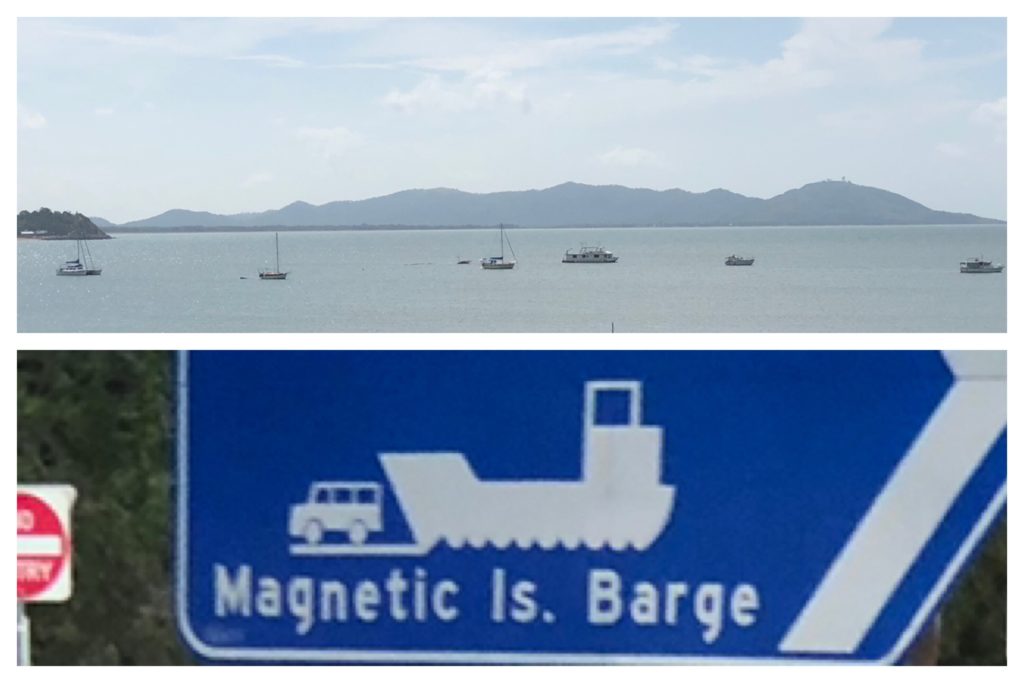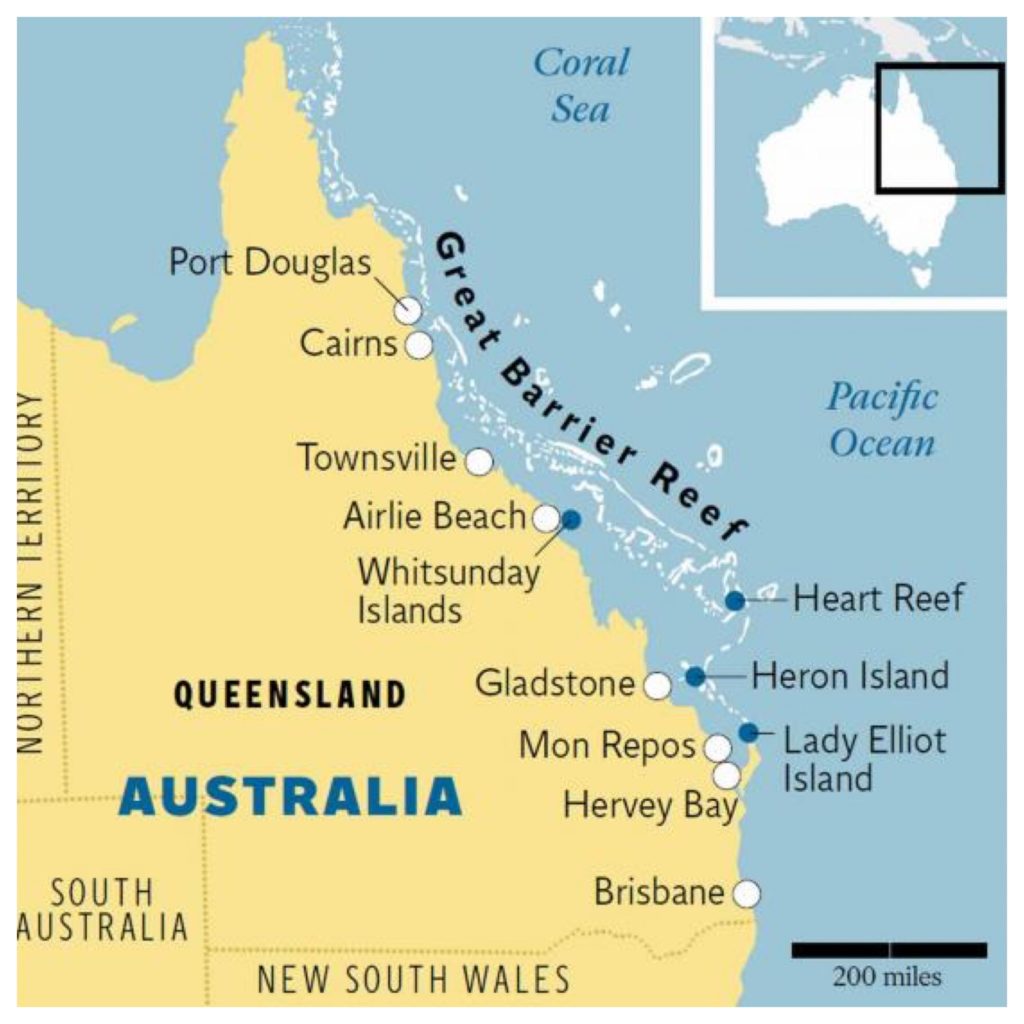
As we travel up the eastern coast of Australia, we parallel the Great Barrier Reef. This is the largest coral reef system in the world. Townsville is a very nice city overlooked by Castle Hill. Our tour took us up to the top of this hill, but the fog and a sudden rain shower limited the view from the top when we arrived. We did see the marker for Captain Robert Towns who gave the town its name. Castle Hill also played a role during WWII as a lookout and American military equipment is thought to be buried in caves dug during the war and sealed up later. None of this equipment has ever been found, however.
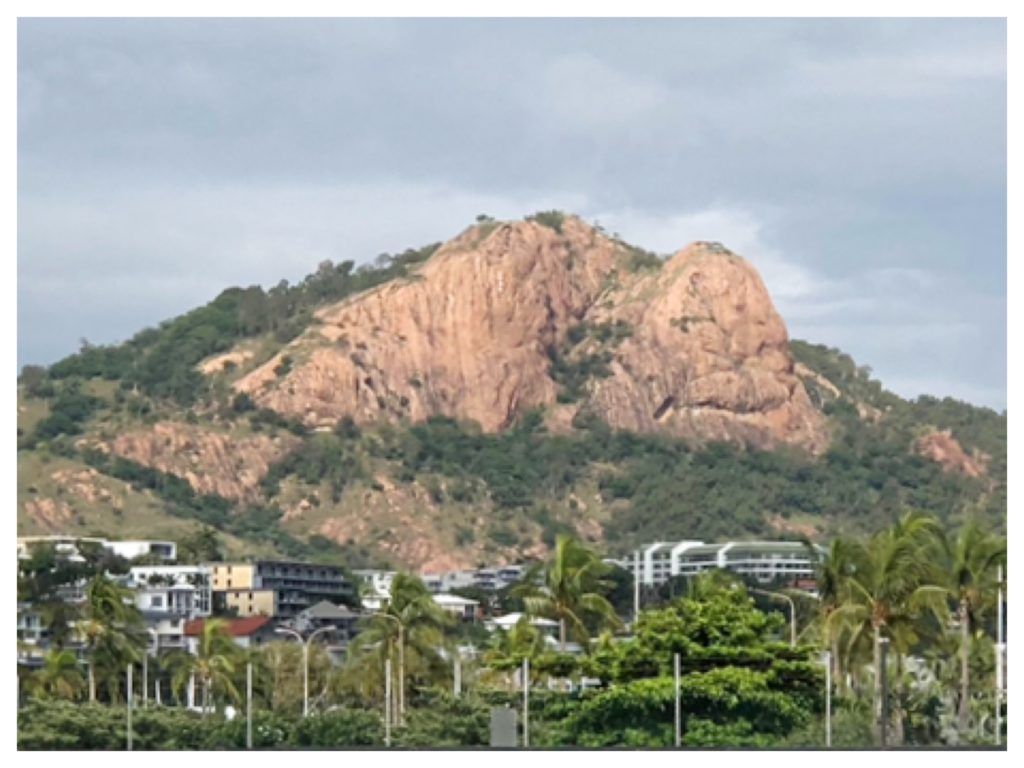
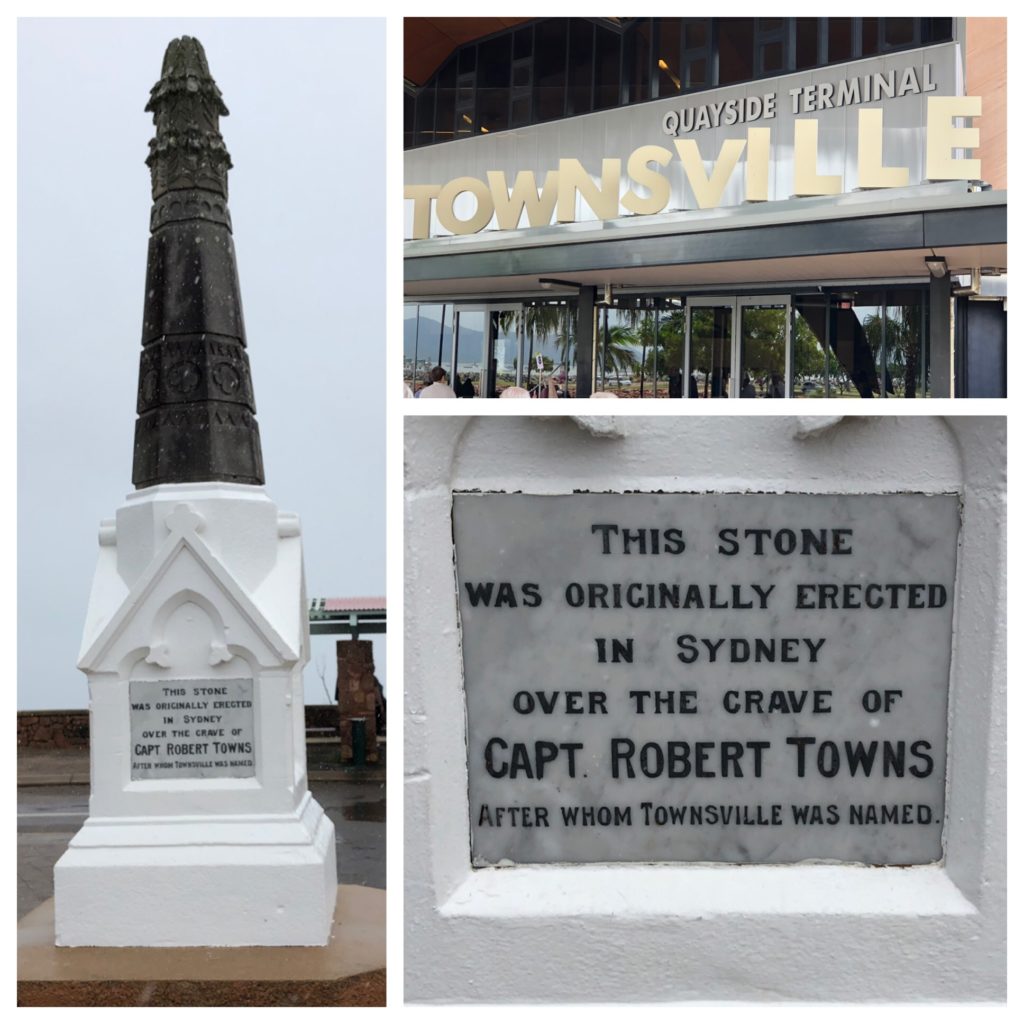
We visited Reef HQ, the town’s aquarium focused on the coral reef. Huge tanks contain many forms of coral and other sea life. This aquarium gives a window to the coral reef and also acts as a great educational experience for visitors. We were able to see the fish popularized by Finding Nemo.
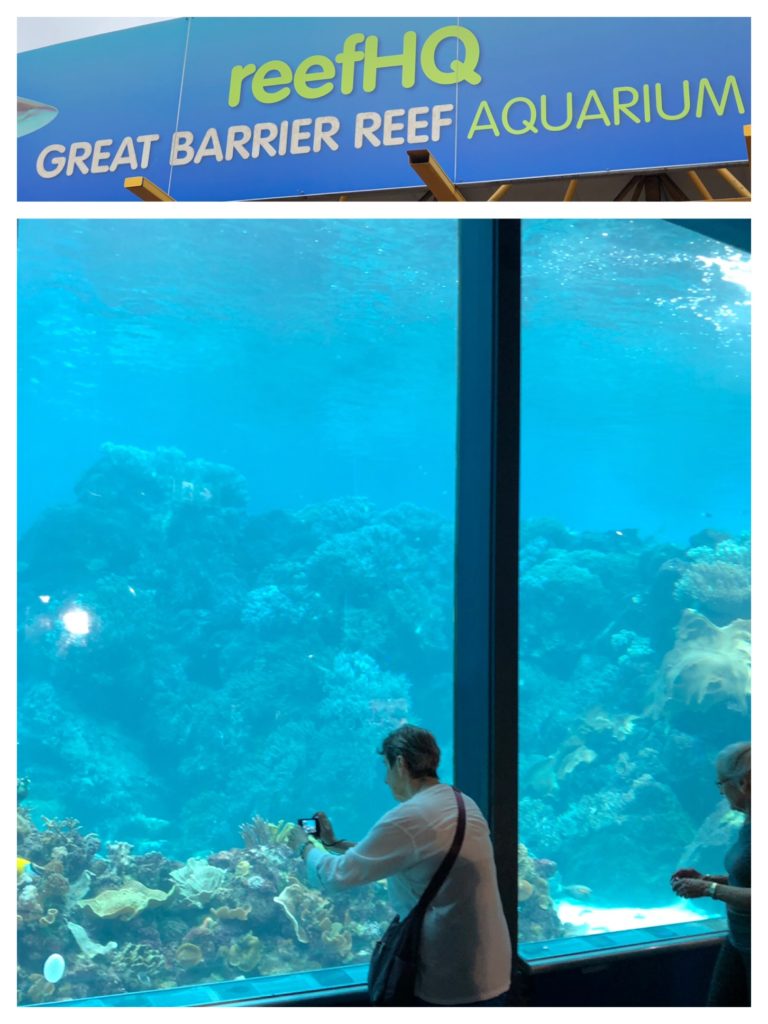
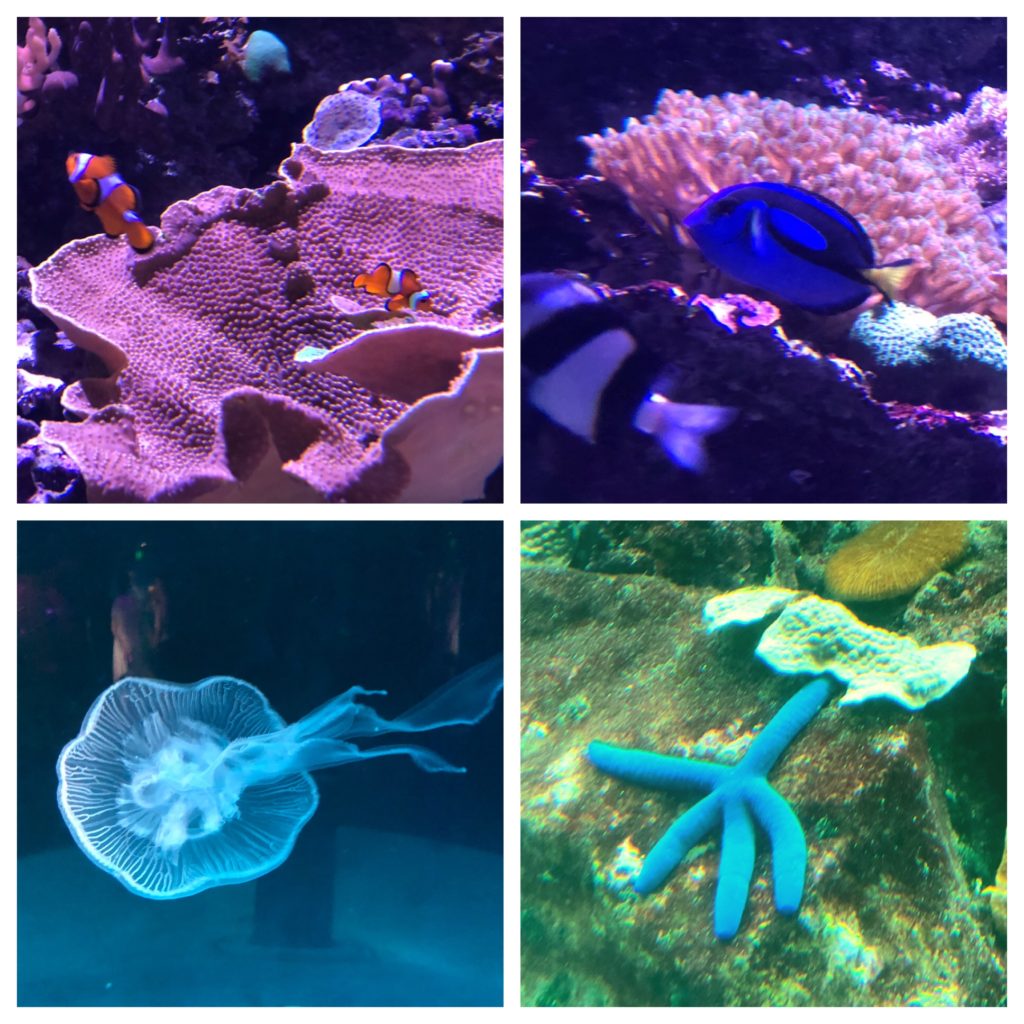
Docents took us through the various portions of the aquarium and explained what we were seeing. I was interested in the touching pool where we saw animals that keep the sand clean by eating the sand and passing out pellets of “cleaned” sand. The hermit crabs were also interesting to see.
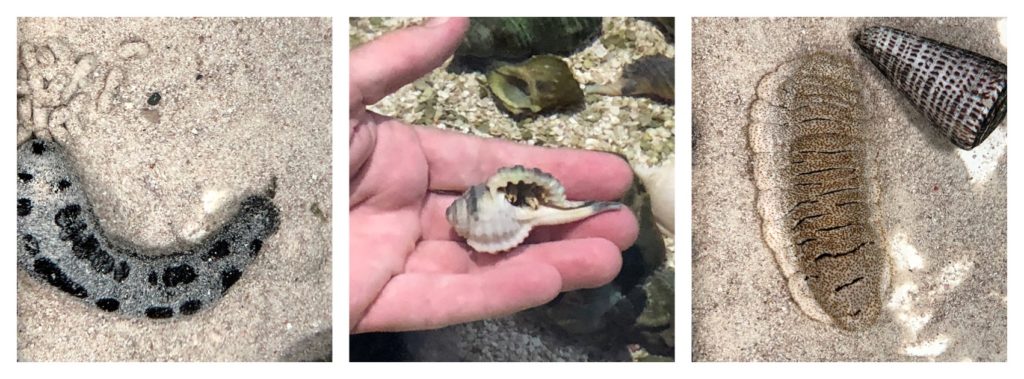
Also interesting were the eels and the Crown-of-Thorns starfish which is one of the species doing quite a bit of harm to the coral reef as well as the damage done by climate change. Townsville had just experienced unusually heavy rains before our visit which flooded parts of the town, but the excessive runoff was also said to be “smothering” the coral reef. Hopefully, the reef can withstand these various conditions.
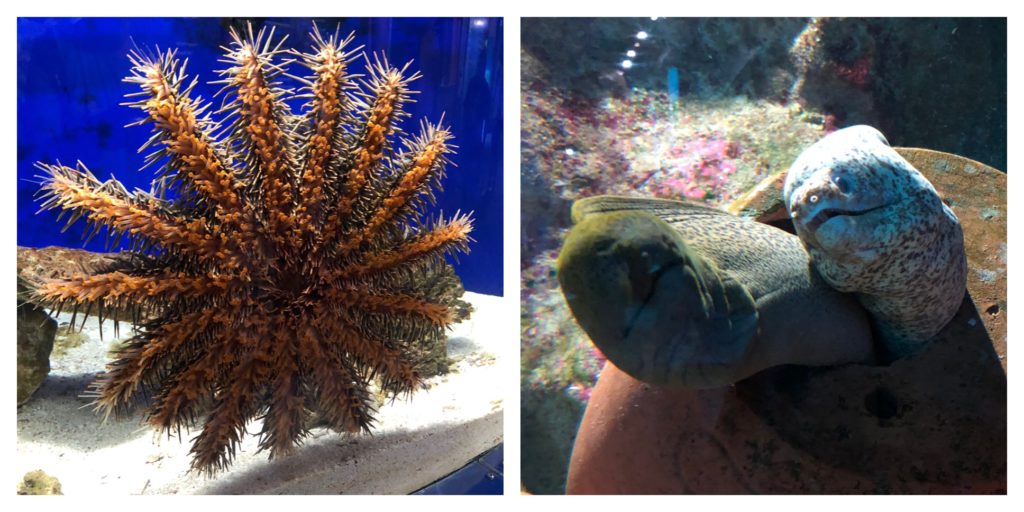
At the end of our tour we visited the turtle hospital. Marine turtles are brought here for various reasons, such as being hit by boats, being hurt by nets or hooks, or by ingesting plastic. The two turtles we saw were healthy and ready to be returned to the areas where they were picked up. They had “floating syndrome” which meant that the turtles were not diving as normal, but simply floating on the ocean surface. Our guide said these turtles had eaten plastic and were basically very constipated. They were treated with mild antibiotics and human laxatives, kept in tanks where the water was changed frequently and then fed until they were back to a normal weight for their age.
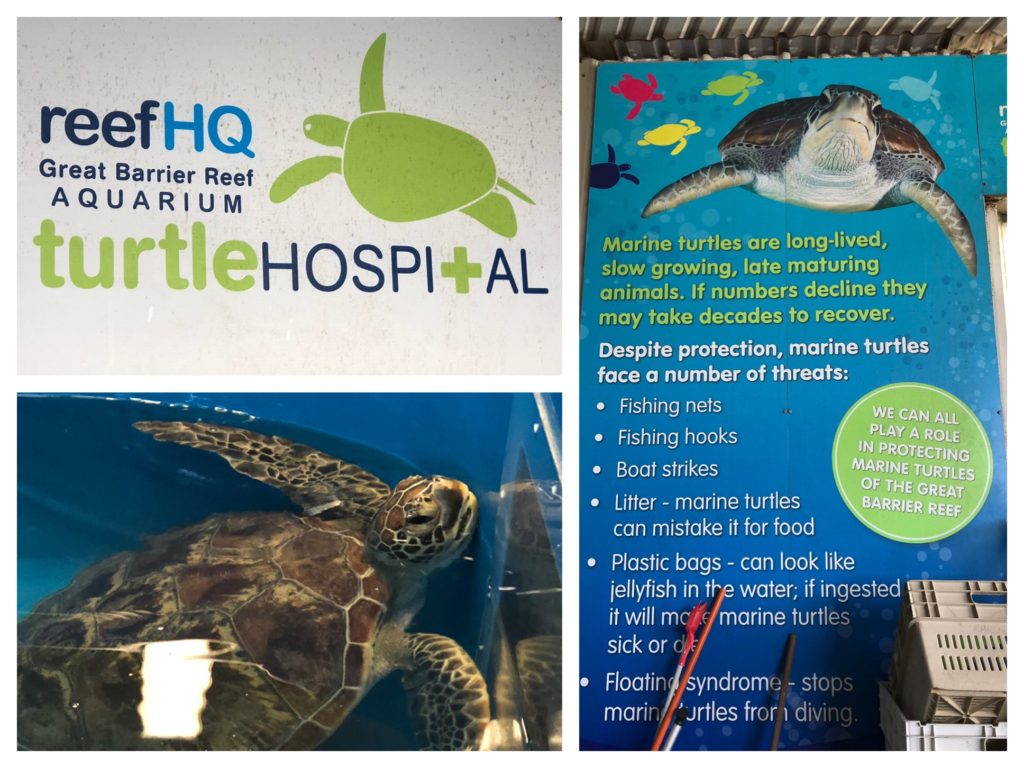
After the tour, Ron visited another museum that had a display of the war ship that came to find the mutineers from the mutiny on the Bounty story. This was called the HMS Pandora. Fourteen of the mutineers were caught and kept in an 11 foot by 18 foot wooden enclosure on the quarter deck (the back of the ship). This area came to be known as Pandora’s Box. The ship ran aground on the Great Barrier Reef and sank. The prisoners had to scramble to save themselves. The ten surviving prisoners were brought back to England to face trial and I believe that three of them were hanged. The important point is that a great effort was made to find and return these mutineers to England.
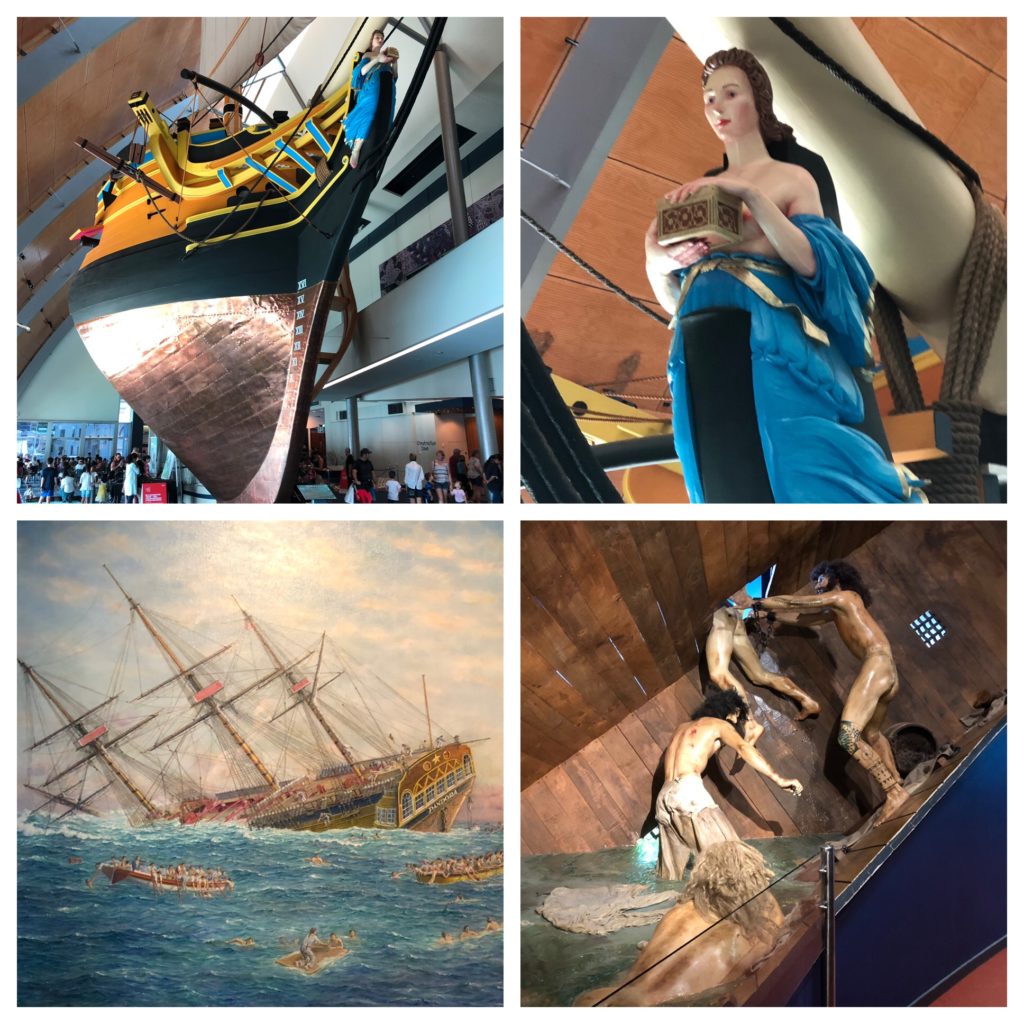
About eight kilometers from Townsville is Magnetic Island, named because the island seemed to affect the compasses on Captain Cook’s ship. This is a popular place because of its beaches, wildlife viewing and access to the Great Barrier Reef.
